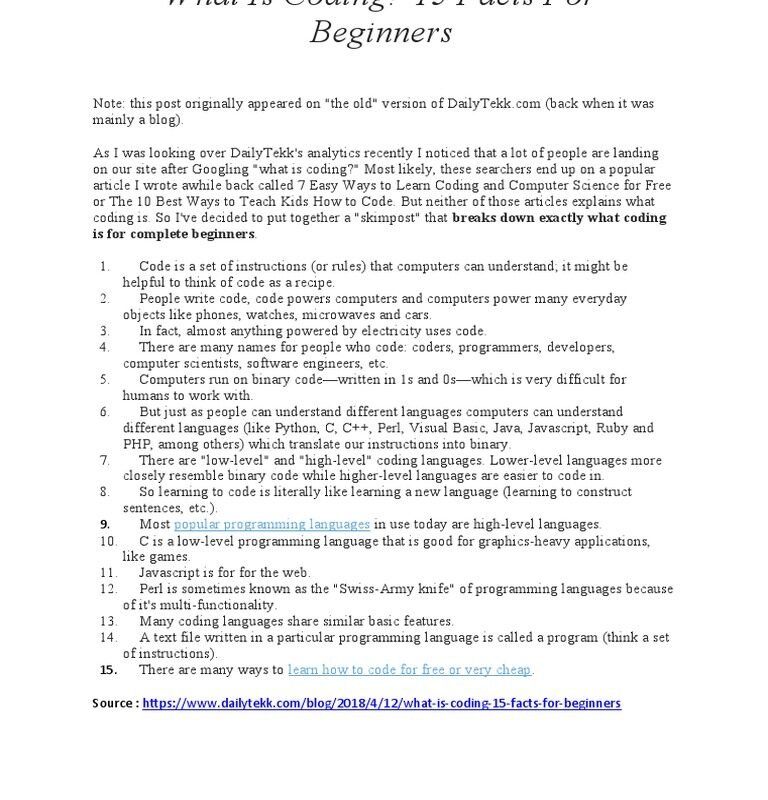 coding-languages">coding-tools-setup">coding-basics">coding-languages">coding-projects">coding-tools">coding Terms Explained for beginners">
coding-languages">coding-tools-setup">coding-basics">coding-languages">coding-projects">coding-tools">coding Terms Explained for beginners">
Understanding common coding terms is the first step to becoming a proficient programmer. This essential vocabulary forms the foundation for effective communication and collaboration within the coding world. Many beginners struggle with deciphering complex code due to unfamiliar jargon. This guide will demystify 12 essential coding terms, providing clear meanings, practical examples, and insightful descriptions to help you confidently navigate the world of programming. We’ll cover topics from variables and loops to functions and data structures, equipping you with the knowledge needed to understand and write quality code. This thorough guide is structured to be easily digestible, ensuring you grasp each idea thoroughly. Each section will introduce key terms, explaining their significance, with illustrative examples and real-world applications.
Variables: The Building Blocks of Data
Defining Variables
Variables are fundamental in programming; they act as containers for storing data. Think of them as named boxes that hold varied types of information. They offer a way to represent data that can change during the execution of a program, making the code dynamic and adaptable. Variables are crucial for storing inputs, intermediate outcomes, and output values, making the code flexible and responsive. You can think of variables as named locations in the computer’s memory that hold values.
Declaring and Assigning Values
Declaring a variable involves specifying its name and data type, while assigning a value involves putting a specific piece of data into that named container. varied programming languages use varied syntaxes for declaring and assigning values to variables. For example, in Python, you don’t need to explicitly declare the data type, while in Java, you need to specify the type before assigning a value. This process is fundamental because it allows you to manipulate data effectively within your code.
Data Types: varied Kinds of Variables
Data types define the kind of value a variable can hold. Common data types include integers (whole numbers), floating-point numbers (numbers with decimal points), strings (text), booleans (true or false values), and more. Understanding these data types is essential to work efficiently with varied kinds of information. varied operations are possible with each data type. For instance, mathematical operations like addition and subtraction work on numbers, while string operations like concatenation work on text. Knowing the data type of a variable is crucial to understanding how it can be used.
Loops: Repeating Actions Efficiently
Iteration and Repetition
Loops are fundamental programming constructs used to perform a block of code repeatedly. Think of them as automated mechanisms that execute a series of instructions multiple times. They make complex tasks manageable by automating repetitive procedures. Loops save time and effort by automating tasks that would be tedious to execute manually.
functions: Modularizing Code
Defining functions
functions are reusable blocks of code that perform specific tasks. They allow you to break down large, complex programs into smaller, manageable parts. Think of functions as self-contained mini-programs. functions improve code readability and maintainability by organizing instructions into logical units. functions promote code reusability and reduce redundancy.
Arrays: Storing Collections of Data
Data Structures for Lists
Arrays are a fundamental data structure used to store a collection of values of the same data type, in a single named container. Arrays offer an organized way to store and manage multiple items of information. Imagine storing a list of names, ages, or any other structured data. Arrays are widely used to store and retrieve data, and they are efficient for managing collections of related values.
Conditional Statements: Making Decisions
Decision-Making Logic
Conditional statements are fundamental in programming. They control the flow of execution in a program based on whether a condition is true or false. These statements allow the code to make decisions, select varied paths, and respond appropriately to varied conditions, enhancing the flexibility of the program. Conditional statements enhance code efficiency by allowing conditional execution of code blocks.
Objects: Combining Data and functionality
Object-Oriented Programming
Objects encapsulate data and methods (functions) that operate on that data. They are an essential part of object-oriented programming, enabling you to organize code logically. Consider them as self-contained units that combine information and actions pertinent to that information.
Algorithms: Step-by-Step Procedures
Logic for Problem-Solving
An algorithm is a step-by-step procedure for solving a problem. In computing, algorithms are used to perform specific tasks on data. Algorithms are critical for efficient programming. They offer a systematic way to break down complex procedures into simpler steps. This methodical approach ensures programs perform tasks as intended.
Debugging: Finding and Fixing Errors
Locating and Correcting Bugs
Debugging is an essential skill in programming. It involves determineing and fixing errors in code. Errors in code, known as bugs, can cause unexpected behavior, crashes, and inaccurate outcomes. Debugging processes vary depending on the type and nature of the error but are key to program stability and functionality.
Data Structures: Organizing Data
varied Structures for varied Tasks
Data structures are specialized formats for organizing, processing, and storing data. They play a crucial function in efficient data management and manipulation. There are numerous data structures available each suited for specific needs. This approach enhances both efficiency and overall program quality by improving code readability and maintainability. Data structures are organized and managed methods of storing information, crucial for program efficacy and ease of use.
In conclusion, mastering these 12 common coding terms is crucial for any aspiring programmer. Understanding the terminology empowers you to confidently navigate complex codebases and contribute effectively to collaborative projects. Start with the basics, practice consistently, and soon you’ll be proficient in your chosen programming language. Ready to level up your coding skills? Visit our web-development">website to access more resources and tutorials!
